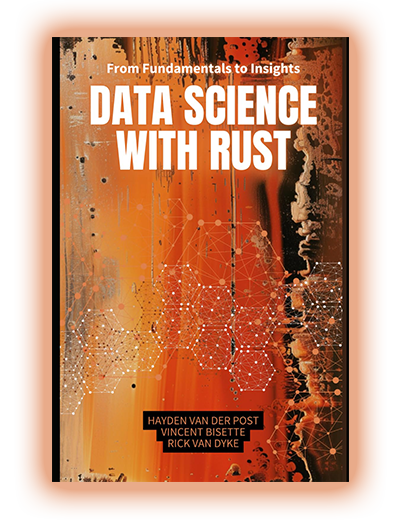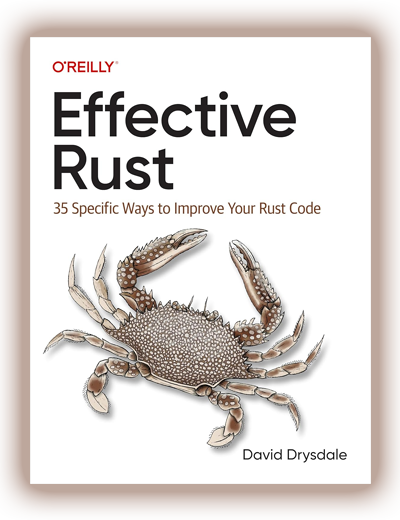I’m Kevin Brooks, a Rust Developer with a B.Sc. in Computer Systems Engineering from the University of Texas at Austin. Since 2017, I’ve been building high-performance, memory-safe systems using Rust - from embedded firmware to distributed microservices. Rust is my language of choice when correctness, speed, and control really matter.
I review books about Rust because I know how steep the learning curve can feel - especially if you're coming from C++, JavaScript, or Python. Many developers give up early, not because the language is bad, but because the explanations are. I highlight books that demystify Rust’s ownership model, lifetimes, and trait system while encouraging idiomatic thinking. My goal is to recommend Rust books that make this programming language click - both for system-level and application-level developers.
The Principles I Rely on When Writing Code
I believe in writing robust, future-proof software that respects both the machine and the developer. Rust reinforces this philosophy - it helps you write better code by design, not by accident. I value precision, maintainability, and performance without compromise.
- Memory safety without garbage collection is powerful
- The compiler is your collaborator, not your enemy
- Zero-cost abstractions are not optional - they’re necessary
- Favor composition over inheritance or deep hierarchies
- Debug-early, test-often, profile-when-in-doubt
- Embrace async when concurrency demands it
- Simplicity is the highest form of optimization
My Rust Development Work: From Embedded to WebAssembly
I’ve contributed to open source, built backend systems in production, and led firmware projects in IoT and edge computing - all using Rust. I write code that’s safe, concurrent, and ready for real-world deployment across Linux, Windows, and embedded platforms.
Highlighted Projects:
- SafeComm – Encrypted Messaging Backend (Rust + Actix). Built a high-throughput secure messaging service using Rust, Actix-web, and PostgreSQL. Implemented JWT-based auth, zero-copy message queues, and custom middleware for rate-limiting and audit logging.
- EdgeBot – IoT Firmware for Sensor Mesh Network. Developed bare-metal Rust firmware for embedded microcontrollers (STM32). Used no_std, custom HALs, and implemented fail-safe OTA updates with Rust’s type safety for critical paths.
- CrateTrack – Open-Source Package Indexing Tool. Built a CLI and REST API to index and analyze Rust crates from crates.io. Used asynchronous Rust with tokio, integrated PostgreSQL, and implemented background workers with async-task.
-
MemGuard – Rust Library for Zeroize & Secure Memory. Authored a Rust crate to securely handle sensitive data in memory. Wrapped memsec, implemented
custom drop guards, and contributed to RustSec advisory compatibility.
The Rust-Based Stack I Use to Build Safe, Performant Systems
As a Rust Developer, I build fast, memory-safe, and concurrent applications designed for real-world performance and reliability. I use Rust not just for its zero-cost abstractions and compile-time guarantees, but also for how it forces me to think clearly about ownership, concurrency, and system boundaries. My work ranges from backend services to CLI tools and embedded modules - all with an emphasis on correctness and maintainability.
Here’s a look at the core tools and libraries I use in Rust development, and how I apply them in real projects:
| Technology / Tool | Using Since | How I Use It in Practice |
| Rust (stable toolchain) | 2019 | My primary language for writing robust CLI tools, microservices, and performance-sensitive systems with strict memory and thread safety. |
| Actix Web / Axum | 2022 | I use Actix Web for building high-speed REST APIs, and Axum for ergonomic routing and integration with async workloads. Both support my microservice architecture needs. |
| Tokio | 2020 | I build asynchronous applications with Tokio’s runtime - leveraging async/await, scheduling, and non-blocking IO in backend services. |
| Serde | 2019 | I use Serde for efficient serialization/deserialization of data structures in JSON, YAML, and binary formats - both in APIs and config layers. |
| Diesel / SQLx | 2020 | I interact with databases via Diesel (for static checks) or SQLx (for async DB access). Schema migrations and compile-time query validation are part of my flow. |
| Cargo / Workspaces | 2019 | I manage dependencies, modularity, and multi-crate setups using Cargo. I leverage workspaces to keep large Rust codebases organized and build-efficient. |
| Clippy & Rustfmt | 2019 | I enforce code quality and formatting with Clippy and rustfmt. These tools ensure idiomatic, readable Rust code across teams. |
| WASM / Rust for Web | 2023 | I experiment with WebAssembly for portable components and frontend-heavy apps, compiling Rust to run efficiently in browsers or edge environments. |
Rust Is Different - And That’s a Good Thing
- Start with the book "Game Development with Rust and WebAssembly" by Eric Smith
- Don’t skip the ownership & borrowing chapters - reread them
- Use cargo check, clippy, and rust-analyzer from day one
- Build small tools or CLIs - Rust is great for that
- Read other people's code on GitHub (especially crates.io authors)
- Don’t rush async/concurrency - focus on the core language first
- Embrace strictness - Rust teaches discipline that pays off
Advice You Can Trust: Frequently Asked Questions
Q1: Why is Rust considered “hard” to learn?
Because it demands precision. Rust doesn’t let you ignore edge cases - you have to be explicit with ownership, lifetimes, and borrowing. That can feel overwhelming at first, especially if you're used to languages that silently allocate or mutate. But once you get through that curve, you’ll write code with fewer bugs, better structure, and more confidence.
Q2: What’s your go-to Rust book recommendation?
The Rust Programming Language (aka “The Book”) is still the gold standard. For more practical system-building, I also recommend Programming Rust (O’Reilly). For async and web dev, check out open-source examples using tokio, actix, and axum - books are just catching up to modern async idioms.
Q3: Can Rust replace C/C++ in real projects?
Yes - in many domains. Rust is already replacing C++ in areas like browser engines (Servo), operating systems (Redox), and even the Linux kernel. It provides similar control with stronger safety guarantees. For embedded, systems, and secure applications, Rust is a production-ready alternative that’s gaining adoption fast.
Q4: Is Rust good for web development?
It’s getting there. Frameworks like Actix and Axum offer powerful performance for building web services. While the ecosystem isn’t as mature as Node or Django, it’s stable and fast. Plus, Rust + WASM is an exciting frontier for high-performance web apps - especially in low-latency UI or cross-platform projects.
Q5: How do you stay updated in the Rust ecosystem?
I follow This Week in Rust, track Rust RFCs, and contribute to open source crates. I also test nightly builds to explore experimental features, and I’m active in forums like users.rust-lang.org and Reddit’s r/rust. The Rust community is incredibly welcoming - it’s one of the best parts of working in this language.




